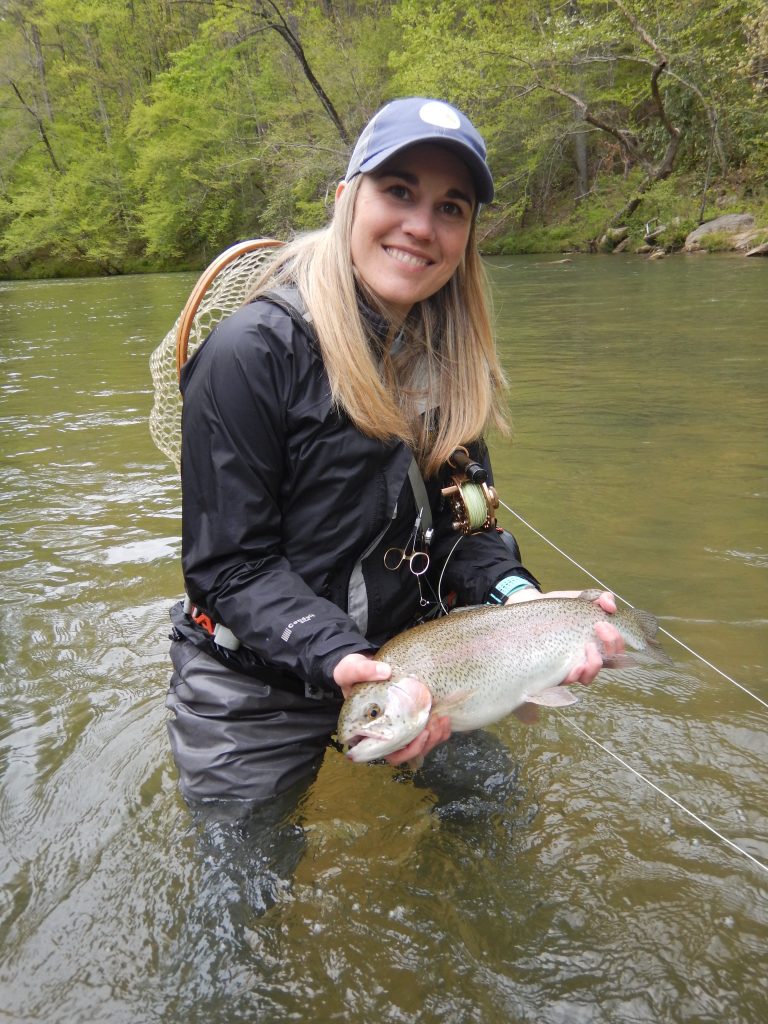Read the River: Tips for Catching Trout
I can think of few other things that get my heart racing like when my fly line goes tight.
If the trout is big enough, the reel will whir and my heart will beat even faster with the anticipation of the beast on the other end of the line. Fly fishing can be a challenging sport to learn, particularly if you have not practiced casting a fly rod (note: You can fly fish with a common spinning reel, but using a fly rod is a great skill to learn). Not only does the angler need to choose an appropriate fly, but where the fly lands in relation to the trout is just as important. Learning how to read a trout stream can be the key to fly fishing success.
Trout can usually be found doing two things: eating or resting. They occasionally add a third activity of spawning (laying eggs) which disrupts the previous two activities, but for our purposes, we are going to focus on a trout’s main two activities. Trout that live in rivers or streams typically look upstream for food, which is important when casting and presenting your fly. If an angler casts too close to the trout, the trout won’t have time to see the fly or the line rippling in the water will spook the trout.
Trout look for food at different depths in the water. Sometimes their food is on top of the water, such as grasshoppers, inch worms or small bugs. Other times, their food source will hatch out of eggs laid under rocks in the water, such as stoneflies. Some trout also like to eat small minnows or baitfish. Knowing a trout’s food source at any given time will increase the chances of catching one.

Fast Water
When approaching a stream and deciding where to cast, first consider the speed of the water. Typically, a trout’s favorite place to feed is in a riffle. A riffle in a stream is where the water moves fast over rocks along the bottom making small waves or bumps on the top of the water. Since the current is quicker here, a trout has a greater chance of seeing a lot more of their food source in less time. This allows the trout to feed quickly without spending too much energy; it also allows them less time to look at an angler’s fly and be picky. Additionally, riffles hold more oxygen, which becomes important in hotter weather. When the stream temperature rises to around 60 degrees Fahrenheit, trout need more oxygen to survive and can usually be found in riffles.
Slow Water
Streams also consist of slower water referred to as pools or pockets. Trout like these areas because they don’t have to spend as much energy holding in the slow water and can relax. However, since the water slows down the trout have longer to examine the food source, and also your fly. In areas of slower water, presentation (or where the fly lands) is key. For the greatest chance of success, cast the fly to the top of the pool and be careful to let it drift through with very little movement. The more ripples the line makes, the lower your success rate. If you are wading upstream and find yourself below a pool, try to cast into it without wading into it. Even the ripples and sounds from an angler’s feet are enough to spook trout in slow water.
Stream Obstacles
Look for obstacles in the water such as large rocks, trees in the water, and even low hanging limbs. Look at how the water moves around these obstacles to decide where to cast. For boulders and larger rocks, trout will sit either in the small pocket behind the rock to watch for food or just downstream where the water slows down to a riffle. Casting in front of the rock and allowing the fly to drift around the rock in the fast water and ending in the slower riffle is usually the best bet.
Fishing around logs or downed limbs can be tricky. Trout generally like the cover that the limb or log provides, but getting them to see the fly without getting the line hung up is challenging. Generally, I will place a cast or two as close to the tree or limb as I can get without getting hung. If that doesn’t lead to a bite, I will cast upstream and allow the fly to drift as close to the end of the trunk or branch as I can get it in the current.
Fly fishing for trout takes practice, as does reading a stream. Just like any other sport or hobby, the more you practice, the better you get. The next time you look at a trout stream, stop to consider the riffles, pools and obstacles for maximum success.
